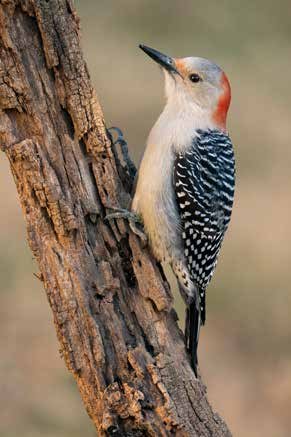Nature Note
The transition from fall to winter in the park is often one of frantic activity among the feathered and furred residents. These may be the last few days when food is available in abundance for many species.
Depending on the year, acorns can be a significant portion of the fall and winter diet for many critters. White-tailed deer, wood ducks, wild turkeys, gray squirrels, blue jays, mice and black bears all eat oak acorns when given the opportunity. During some years, nearly all the oak trees in a region will produce huge crops of acorns and wildlife flourishes. Other times, only a few select trees will bear any nuts and those become hotbeds of animal activity. During your next hike at the park, try to notice which oaks have acorns and discern the tracks, scat and other evidence of animals foraging under the all-you-can-eat buffet of the woods.
As the leaves drop from the trees visibility improves within the forest interior. Birds that were once hidden amid a wall of foliage are easy to spot. Woodpeckers are especially entertaining to watch during the cooler weather. The area around Lake James has five resident species; downy, hairy, red-bellied, pileated and northern flicker. Red-headed woodpeckers are occasionally seen during fall migration and yellow-bellied sapsucker is a wintertime visitor. Is it possible to see seven different types of woodpecker in one day at Lake James State Park? Yes. Has anyone ever done it? Probably not, but early November would be the best chance to do it if one was so inclined.
Most of the park’s reptiles and amphibians will have gone dormant for the season, but some frogs and salamanders remain active through much of the year. Spring peepers will still sing on warm winter nights and fence lizards, skinks and aquatic turtles will take advantage of sunny afternoons to bask on warm rocks and logs.
If you really want to see and know the park and its landscape, this is the time of year to explore it. See you out on the trail.

